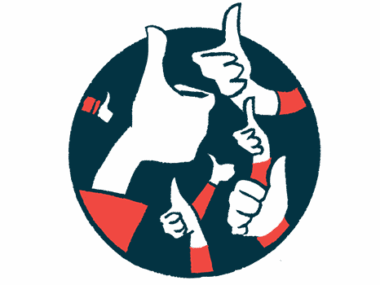Measuring Productivity Differently as a Patient with Pulmonary Fibrosis
Written by |
Last week I wrote a column about energy expenditures and how I choose where to invest my energy in the multiple tasks vying for my attention. Unfortunately, since being diagnosed with idiopathic pulmonary fibrosis (IPF) four years ago, I just can’t give everything the energy I’d like. As a result, I’ve had to learn how to balance my energy levels with rest, both physical and mental, which has not been easy. I have had to learn to measure my productivity differently since being diagnosed with IPF as well.
Prior to my diagnosis, I would be on the go from sunrise to sunset. I was attending school full-time, volunteering on various boards or committees, and playing two intense sports — all while enjoying every moment of a social calendar that was very full. I even tried to keep up this momentum after my diagnosis, but within a year I experienced my first significant setback, which made me realize I had to slow down. Since then, I’ve been forced to do things differently and really evaluate what is good for my mental and physical health, and what isn’t.
In hindsight, I believe I used my hectic schedule to measure productivity and feel successful. Many of the roles I held became part of my identity, be it a volunteer, athlete, student, or board member. After my IPF diagnosis, when those identities began to fall apart because I was too tired or sick, I felt very lost and confused. Since then, it has been a challenge to reframe my mind from focusing on what I can no longer do to focusing on what I can still do. I now measure productivity differently as a patient who lives with a life-threatening lung disease. I focus on the quality of my accomplishments rather than the quantity.
Unfortunately, over the years since my diagnosis, I’ve shied away from a few projects or social events out of fear. Because I was far more tired than usual or was using supplemental oxygen, I thought I wouldn’t be able to do as much as others expected of me, or I wouldn’t be able to do it as well as I could before IPF. I have since learned this fear was entirely misplaced and if I educated others on my abilities and what I needed, their expectations of me shifted. I was then left to shift my own expectations, and accept that I couldn’t do all that I could before. However, that didn’t necessarily mean I wasn’t being productive.
While I knew I needed to measure productivity differently since getting sick, I didn’t know how to do that, so I had to use simple examples to get started. One of the examples I used was walking my dog. When I was healthy, I could work full-time days, come home to cook dinner, run an errand, work out, and take my dog for a walk, sometimes late into the evening. If I could do all of these things, I’d consider it a productive day.
However, once my shortness of breath started to intensify, I became increasingly exhausted and unable to do all these tasks in a day. I was devastated, and had to think about which tasks to eliminate from my list. My dog needed to go on a walk, so I had to release other things so I could reserve enough energy to take her for a stroll. She loves walking with me, and I find it very relaxing as well, so now I consider my day productive if my golden retriever and I go on a walk at the end of the day, regardless of the length. Even if that is the only thing I accomplish in the evening, knowing it is quality time with her makes it a productive day in my mind.
My measurement of quality rather than quantity also applies to my friends and family members. If I have to set aside a number of tasks on my “to-do” list in order to have enough energy to support them through something, I still consider that a productive day. Even if I don’t finish what I needed to, being able to spend time with friends and family is quality time I wouldn’t give up for anything. I might accomplish one task rather than many, but that doesn’t mean I should consider myself less productive. My productivity looks a little different now as a patient with IPF, but it’s no less important. After all, it is all just about how you choose to measure it.
***
Note: Pulmonary Fibrosis News is strictly a news and information website about the disease. It does not provide medical advice, diagnosis, or treatment. This content is not intended to be a substitute for professional medical advice, diagnosis, or treatment. Always seek the advice of your physician or other qualified health provider with any questions you may have regarding a medical condition. Never disregard professional medical advice or delay in seeking it because of something you have read on this website. The opinions expressed in this column are not those of Pulmonary Fibrosis News or its parent company, Bionews Services, and are intended to spark discussion about issues pertaining to pulmonary fibrosis.







Leave a comment
Fill in the required fields to post. Your email address will not be published.